Walking to school, Dumbarton Street, Rodgers Forge Elementary School and Dumbarton Middle School, Greater Towson, Baltimore County, Maryland.
Based on the stated reason that a 15mph speed is needed to promote walking to school, hence the proposed Pedestrian Safe Streets Speed Limit Amendment Act, I think it's important to consider that regardless of what people say about why they don't let their kids walk to school, in DC, it's not the speed of traffic on residential streets. (Which is an illustration of legislation being proposed based on beliefs, rather than being the product of a thorough process of research and consideration.)
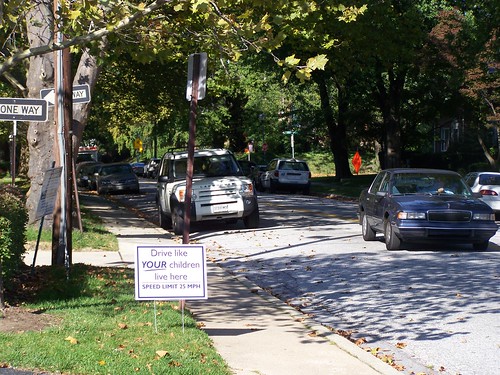
"Drive like your children live here" yard sign, Rodgers Forge neighborhood, Towson.Mostly it has to do with the failure to maintain high quality neighborhood schools serving for the most part neighborhood children.
This has only been exacerbated by the creation of charter schools, which furthers the disconnect between neighborhood schools enrolling local students, so children have to travel a great distance to get to school, a distance that is typically much farther than if they went to a neighborhood school.
In communities like Capitol Hill, where through a great deal of community effort, quality neighborhood schools were maintained in the face of a long term decline in the quality of the DC Public School System (see "
Neighborhood Schooled: As parents in places like Capitol Hill embrace neighborhood schools, has D.C.'s black middle class given up on them?" from the
Washington City Paper) many of the children get to school by walking or biking, the younger children being escorted by one or both parents.
Presumably, the walk to school rate has increased with the roll out of various walk to school programs to schools in that neighborhood.
But Capitol Hill, while it has great spatial conditions, isn't an outlier in terms of speed limits, it's an outlier in terms of having quality schools within the neighborhood which attract neighborhood students, who then don't have to travel outside of their neighborhood to go to school.
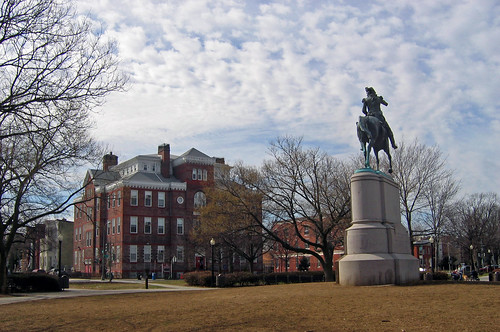 Top photo: Peabody School and Stanton Park, Capitol Hill, DC, Flickr photo by Chuck and Alice Riecks. (Not pictured, there is also a nice playground in Stanton Park.) Bottom photo: C Street NE in front of Peabody School is a perfect candidate for a Belgian Block roadway treatment, as it also abuts Stanton Park.
Top photo: Peabody School and Stanton Park, Capitol Hill, DC, Flickr photo by Chuck and Alice Riecks. (Not pictured, there is also a nice playground in Stanton Park.) Bottom photo: C Street NE in front of Peabody School is a perfect candidate for a Belgian Block roadway treatment, as it also abuts Stanton Park.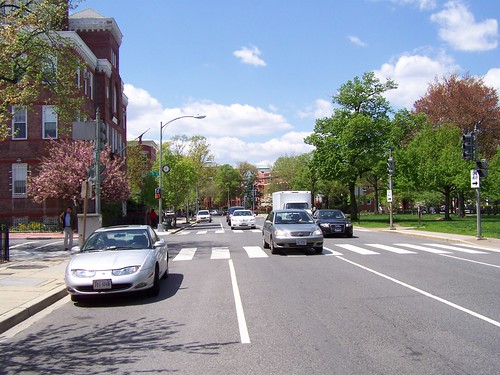
Even though DDOT is doing a lot with walk to school programs, much more could be done.
First, the school district* could be required to do balanced transportation planning, and have walk and bike to school programs for every school. Second, charter schools should be required to do transportation demand management, with a focus on walking and biking to school. Note that the Metropolitan Branch Trail is being used between Brookland and Capitol Hill by parents and children getting to public and charter schools. Again, a master transportation plan for the city should require that institutions such as schools do TDM planning.
(* Note that I have made this recommendation for the State of Maryland, that school districts should be required to do balanced transportation planning including support for walk and bike to school efforts, rather than expecting ad-hoc efforts on a school by school basis. See "
More on (Maryland) Walk to School.")
Biking to school on the Metropolitan Branch Trail
Third, in Washington State, all K-5 schools are required to have safe walk/bike to school maps (e.g.,
Seattle school walk zone maps). Fourth, Washington state also recommends that school districts have a traffic safety committee to oversee the creation of walk to school mapping, initiating improvements around schools, and other safety activities. Most of the school districts, especially city-based systems, have such committees. (The State of Washington also authorizes the use of money given to school districts for "transportation" to be used for physical improvements--sidewalks, etc.--to support walking and biking to school.)
But all that being said, the most important thing to do would be to have great neighborhood schools. Then walking would be a natural and normal thing to do--just as it is in Greater Capitol Hill.
On my block, none of the 8 school aged children go to Whittier Elementary School, our neighborhood elementary school located an easy less than 5 block walk away--7 of the children go to charter schools, 1 goes to a private school and all are driven to school.
Labels: car culture and automobility, provision of public services, public education/K-12, traffic engineering, transportation planning, urban design/placemaking, walking


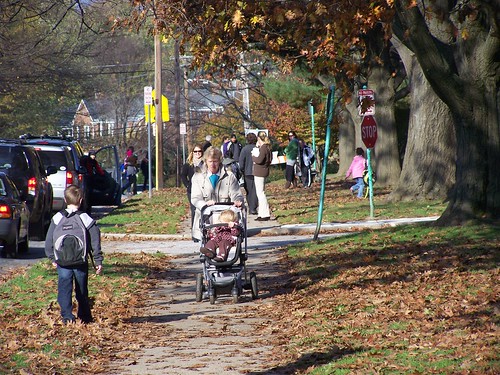


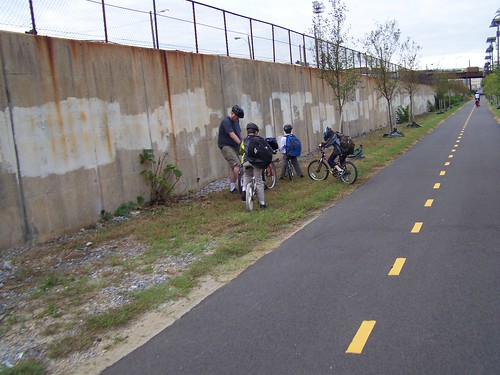



0 Comments:
Post a Comment
<< Home